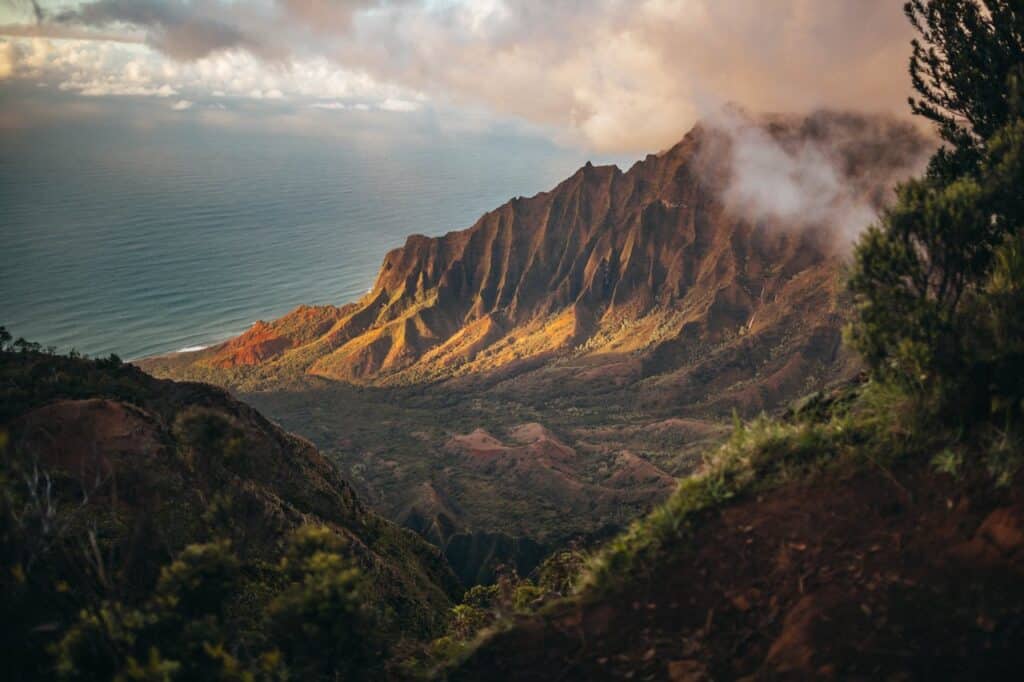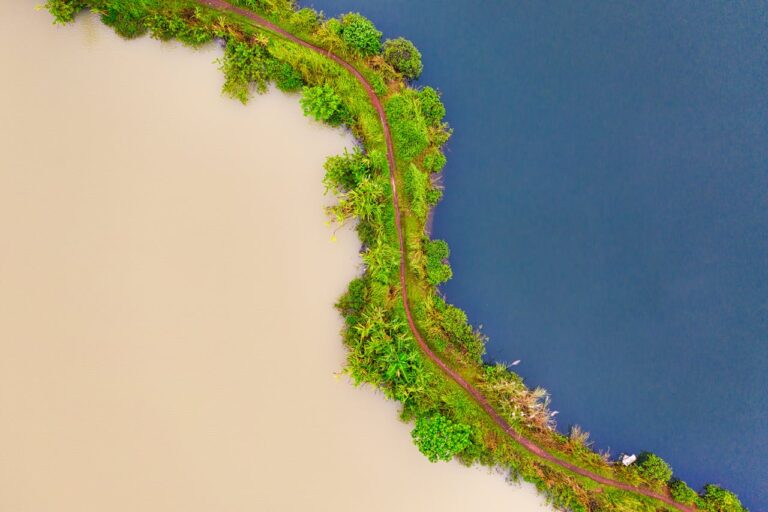I have always loved road trips. Mostly for the view and the scenery. It’s the adventure of discovering different landscapes I love most. That and traversing God’s good creation.
On a recent day off, I took to the road and headed for the mountains. As I navigated the changing grades peppered with sharp curves, I reminisced on the ups and downs, twists and turns I’ve experienced in this spiritual life in Jesus. Winding my way around those blinding curves, not being able to see what lay ahead or when I would reach the summit (or valley), I reflected upon our pilgrimage with the Lord. Much of the journey often seems unforeseen and uncertain.
Life, in general, takes us across various physical terrains which can map onto our spiritual lives. The spiritual journey of disciples crosses many metaphorical landscapes. Metaphors, like those of weather or seasons, help us gain a fuller meaning of the unseen spiritual life. You’ve likely heard it said that we “go through different seasons” and “weather many storms.” For this article, I’m exploring the symbolism of natural landscapes to our spiritual lives.
The Spiritual Aid of Metaphor
Don’t you find visual topography helpful in communicating inner, spiritual experiences? Jon Levenson posed, “Geography is simply a visible form of theology.”
Natural landscapes are rich metaphors when grappling to understand and describe different aspects of a person’s spiritual life. Experience of place speaks where words are often lacking. What is experienced in the soul has been penned in volumes of journals by the saints throughout time, often expressed through poetic imagery. The biblical narrative, from Genesis through the Gospels, takes place in geographical context, even as it maps onto a deeper, spiritual reality.
Can landscapes be sacramental (sacramental being an act that has a spiritual effect)? I would offer that they are, when traversed in contemplative prayer. They can certainly heighten understanding of the work the Spirit is doing within pilgrims in growing their relationship with Jesus. However, the landscape is not the agent of spiritual growth or maturity. Only God is. Nor is it any guarantee of outcomes. They are descriptive. Allegories, of sorts.
Employing journey or pilgrimage as metaphors for our life in Christ can be helpful in many respects, as can natural elements in God’s creation. They assist our understanding of the sanctifying work of the Spirit in unseen places within the disciple.
These spiritual landscapes along the journey—often navigated in solitude with the Lord—help us experience the Father, Son, and Spirit in bringing about lasting transformation.
“Natural landscapes are rich metaphors when grappling to understand and describe different aspects of a person’s spiritual life.”
With God in the Wilderness
One of the most common metaphors used to communicate a spiritual experience is that of the wilderness. The identifiable elements of this desolate and barren landscape provide clear definitions for periods when faith feels dry or stagnant and God seems distant. The harsh and dangerous terrain can become a proving ground of testing. But it can make a disciple vulnerable in temptation.
These challenges can create a rebellious or complaining spirit. A person can easily grow faint in these arid places. They can also instill an intense longing for God. Here, where every distraction is stripped away, is prime real estate for someone’s attention.
Even in the desert, refuge can be found in God. He can use the severity to shape and purge. The stark, inconsistent topography can create dependence upon God for survival. Deliverance. God can fill and water those dry and empty places and lead you through the desolation.
When the journey is long, God’s been known to provide an oasis or hidden stream. He can bring beauty and order in this locale, as He did out of the pre-creation wilderness. For as the Spirit hovered over that chaotic wasteland, He is over every wilderness.
“As the Spirit hovered over that chaotic wasteland, He is over every wilderness.”
Keep in mind that God sometimes leads His people to the wilderness to protect from danger. God took the redeemed Hebrews through the wilderness to form them because they weren’t ready for challenges presented by a different, shorter route. The question remains: Will God still be worshiped and praised? Crucial to a disciple’s transformation is the humbling that happens in the wild. A matchless gift is given in experiencing God’s unfailing sufficiency because of the inexhaustible grace He extends to endure the desert—even for an entire community of people.
The deliverance of God from Egypt is emblematic of the deliverance of Christ from this wilderness into a new creation with unmarred landscapes. This is our eternal hope. But until our hope is fulfilled, there remains the possibility of a return trip to the wilderness.
With God in the Valley
Another landscape that’s all too familiar to many is the valley. A person doesn’t stroll through a valley. They trudge. These low places are representative of periods of adversity, trial, and suffering. Tears stain the pilgrim’s face. And everything aches. Valleys can take on many shadows. Shadows that produce fear.
However, like every spiritual or experiential terrain, there are sanctifying benefits. Undeniably, hardship builds endurance. And endurance, the Bible affirms, then builds character. (Of course, no one wants to hear that while they’re in the valley.) Traveling here can tighten our grip to the Father’s hand. Since the comforted who have received God’s mercy are better able to comfort others later, it would seem that valleys also form spiritual memory and compassion. There is an upside: Valleys lead to mountains.
“Traveling here can tighten our grip to the Father’s hand.”
With God in the Mountains
The mountain metaphor is multi-faceted. There is the gradual, and sometimes grueling, ascent. The disciple strives strenuously in their upward climb. Reaching a mile marker turns to triumph as they fully experience the Lord’s joy.
Christians throughout time have referred to a “mountaintop experience,” where they encountered God, enjoyed fellowship with Him, and sensed His glory. Soaring in this blessed state is passing. Glorious, but temporary. The effects, however, can be lasting. And the ensuing worship unparalleled.
With God in the Ruins
Have you ever taken a long road trip where you pass scarred terrain—where it seems like something catastrophic took place (like a forest fire, tornado, or flood)? Ruins, too, can be a metaphor for a spiritual landscape where the broken falters under crushing weight. It is a reminder of our humanity . . . our fallen state . . . our immortality.
Ruins bare our weakness. They don’t necessarily mean defeat, though. Brokenness has the capacity to create in the disciple a blessed poverty of spirit. Crushed and broken kernels of grain can still produce a harvest. Our wounds help us recognize similar woundedness in others, stirring empathy into ministerial action. Ruins can also bring glory to God. They are a mighty testimony of His relentless grace, His commitment to healing and wholeness, and His faithfulness to rebuild.
“Brokenness has the capacity to create in the disciple a blessed poverty of spirit.”
With God in the Pasture
Reflecting on the landscape of a pasture conjures up a pastoral, serene scene. This is a resting place. A Sabbath. In this spiritual setting, a person feels nurtured and secure. In the stillness, the disciple comes to know the equipping power of Jesus for the next challenging landscape. The peaceful terrain, much like a stream, promotes recovery and preparation. Anxiety is washed away and wounds are cleansed. The soul experiences the gentle care of the Good Shepherd.
Overwhelmed by the Jungle, Stuck in the Pit
The next few spiritual landscapes can unsettle one’s journey to varying degrees. Rolling hills and rocky fields might depict a bumpy and inconsistent spirituality. Like the unpredictable, changing terrain, one’s relationship with Jesus is erratic—possibly because their journey feels uncontrolled and uncertain. Then there’s the jungle. Because of the thick, dense foliage, much is unseen. It might feel vibrant, but it’s riddled with danger and lurking with wild beasts. Where there was scarcity in the wilderness, here there is abundance—not always the good kind. And then there’s the pit.
Our pilgrim journey can descend into a deep dark pit from moral failure, an unhealthy habit, or sin. Sometimes, we trip and fall. Sometimes, we’re pushed. Sometimes, we walk right in. People in a pit tend to experience gut-wrenching remorse, anguish, isolation, entrapment, and even despair. Don’t believe the lie that all is lost. There is a way out. Repentance can turn that journey around. Why, look what God did with Joseph once he was delivered from the pit. Even from there, the Lord rescues and redeems.
“Look what God did with Joseph once he was delivered from the pit.”
With God in the Meadow
Let’s move on to a far more pleasant spiritual landscape, best described by a meadow. Meadows are filled with bird song, hallelujahs, sunshine, flowers, and beauty. Their expansive views and wide-open spaces give a person a view of the horizon. This is a great place to plan. Learn. And delight in the Lord.
Meadows look so much more beautiful because of the wilderness (and mountains, because of the valleys). The terrain levels off, so pilgrims can recover and regain their footing. Don’t stay long, though. A brief respite to reflect, coast awhile, and recharge supply is all that is needed. After all, flowers don’t always bloom there. And shelter from the wind is sparse.
With God in the Waterfront
Another calming landscape is the waterfront. People retreat to beaches and lakefronts for quietness and sport. The journey can quickly flip when a raging storm rolls in. Remember: The Lord is Ruler over the tempest. He is an Anchor to keep from being dashed against the rocks or washed away at sea.
With God in the Spiritual Garden
The final landscape we’ll tour is multi-faceted and tiered. It’s the spiritual garden.
I didn’t like gardening much when I was a kid. It was a chore. And hard work at that! But we have the best Gardener who has provided a Helper for the heavy lifting. Now, when I think on gardens, goodness comes to mind. Gardens remind us of life before the fall. And of a new one coming. In this metaphorical landscape, the Gardener prepares for service (because tending is always required). Gardens are a great place for cultivating spiritual disciplines. And for heeding the solemn warning of Jesus to “watch and pray so you won’t fall into temptation” (Matthew 26:41, NIV).
There are many phases to gardens: sowing, new growth, pruning, fruitfulness, reaping, and hibernation. Our spirituality includes all of these phases as well. If we let the Spirit plow the seeds of God’s Word deep in the good soil of our hearts, He brings about new growth for our discipleship.
In the formation of our discipleship, the Father prunes His child through discipline because gardens can, after all, become wild and unruly and overrun with plagues of thorns and thistles. Granted, pruning is not usually pleasant. But the greater the pruning, the greater the harvest.
“The Father prunes His child through discipline because gardens can become wild and unruly and overrun with plagues of thorns and thistles.”
There are multiple types of fruitfulness—from mentoring and discipling to the harvest that comes from living a righteous life.
Another part of the natural cycle of a garden is a period of hibernation, when everything slows. In that state, a garden can become dry and withered, or it might simply be at rest. Our spiritual lives have times of stillness, silence, solitude, and rest. We must remain diligent so that we do not become stagnant and undernourished. There is no need to fear when growth isn’t readily apparent. Remember Abraham and Sarah. Though they “were good as dead,” in God’s faithfulness to promise, He brought forth life. This locale requires patience, as you wait for tendrils to sprout. Don’t give up! We never know what God is doing in unseen places. Or what might sprout from fertile soil.
Journeying on Our Knees
Along with trust, a flourishing disciple needs all of these landscapes for God to refine perfection. Each, no matter the difficulty, contains blessing—because of the Lord’s presence. So, journey through each of these on your knees. God, who can change every landscape, can also change your perception of them through prayer. Those prayers will grow your relationship, fortify faith, and bolster hope—to fuel the journey and win every battle (because every landscape is also a battlefield). When those battles arise, ask if the struggle is resistance to the landscape or spiritual forces working against the work God is trying to accomplish in that place. One must walk in sync with the Spirit for the endurance required to get through difficult terrains—which is why it’s called spirituality.
Turning geography into a metaphor helps to grow our paradigm on spirituality. Thinking on such things opens our eyes to the fullness of the Christian life. When we add an understanding of spirituality to our theology, the way we relate to God is benefitted. Unfortunately, some shy away for fear of drifting into extreme views. This is where Bible study and conversations with a community of believers is essential.
“Along with trust, a flourishing disciple needs all of these landscapes for God to refine perfection.”
The Lord of the Landscape
Take great comfort in the truth that there is no place we can venture where the Lord has not also visited. He traveled through every terrain—both physically and spiritually, which is why He can empathetically identify with us.
The Son of God Incarnate began His earthly life in the hills of Bethlehem (a bit of a rough and rocky start). As an infant, His family then fled through the deserts of Egypt. From the glory of His baptismal experience in the Jordan River, Jesus at once was driven into the wilderness. It too was a preparing place for Him. There, He overcame the elements and the temptations of His enemy.
Jesus scaled the mount to preach His inaugural address. He went to the waterfront to call His disciples. He traveled many rocky roads and encountered great opposition. He scaled the mountain top of His transfiguration. He also had to journey alongside the grave to endure the tomb of Lazarus.
Jesus experienced two contrasting gardens. One, Gethsemane, was filled with anguish, temptation, and battle. Not to mention disappointment—for in His vulnerable state of crisis, His disciples failed to keep watch. The other, the garden of His resurrection, was engulfed in life and triumph.
“Jesus experienced two contrasting gardens.”
Jesus also experienced two contrasting mounts. On the excruciating Mount of Calvary, He laid down His life. However, on the Mount of Olives, He was vindicated with His ascension. Now, He has gained the glory of heaven’s throne.
From the heavens to the grave, there is no place the Lord has not already been. He is Lord of the landscape—for all the world is His creation. Whatever landscape you find yourself in at any given moment, God is there—for all creation is His dwelling place. As the psalmist attests, “If I go up to the heavens, you are there; if I make my bed in the depths, you are there. If I rise on the wings of the dawn, if I settle on the far side of the sea, even there your hand will guide me, your right hand will hold me fast” (Psalm 139:8-10, NIV). No landscape is God-forsaken.
What better companion, in any landscape, than the One who has already been there?
The Better Landscape Coming
Undeniably, a disciple cannot navigate the journey of their life in Christ as they are when they first come to Jesus. Transformation is needed. By the merciful, loving hand of God, the Spirit’s guidance, and the Lord’s comfort and compassion, the disciple is continually being sanctified. Spiritual landscapes set the stage for that transformation for the journey.
More than the spiritual grit and strength gained, there is the irreplaceable increase of experiential knowledge of God and the growth in relationship with all Three Persons of the Trinity. Then, there are the invaluable lessons learned. These lessons bear fruit, for they equip disciples to minister to other pilgrims traversing familiar landscapes.
Our spiritual life in Christ Jesus is beautiful. And hard. All for the landscapes traveled. But would we find a constant flatland rewarding? No, this abundant life in Christ is made more alive by a journey of challenge and change. The bent is that the landscapes too are in a fallen state, but there will be a day when even they will be redeemed. Then we can fully enjoy them in all their grandeur.
For more from Debbra, visit debbrastephens.com.











